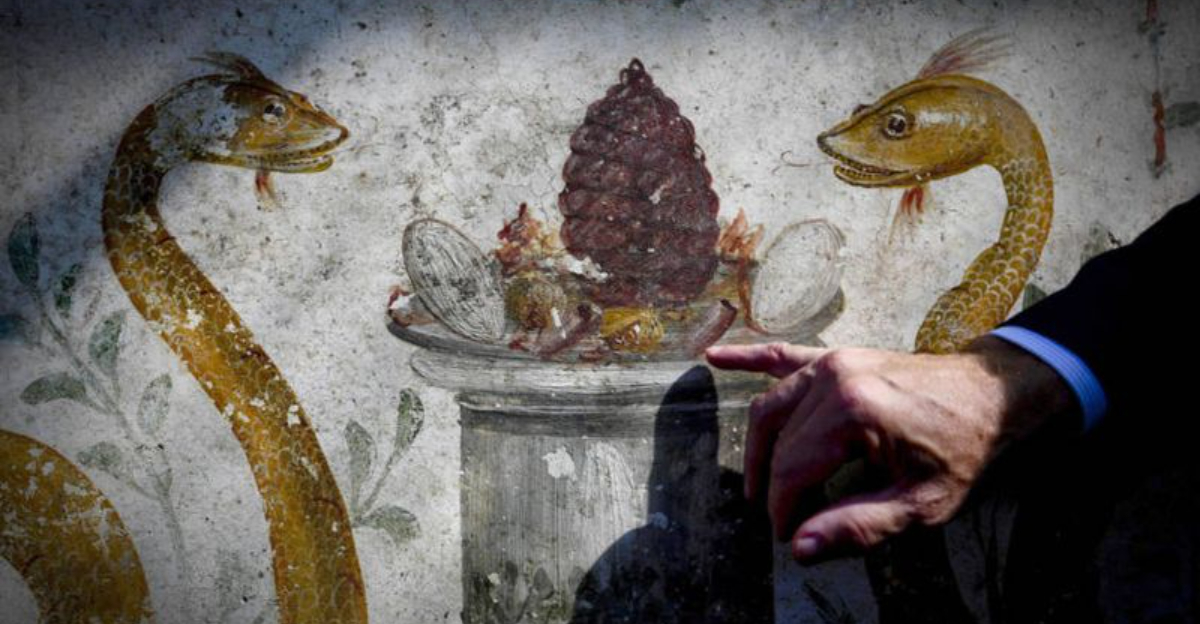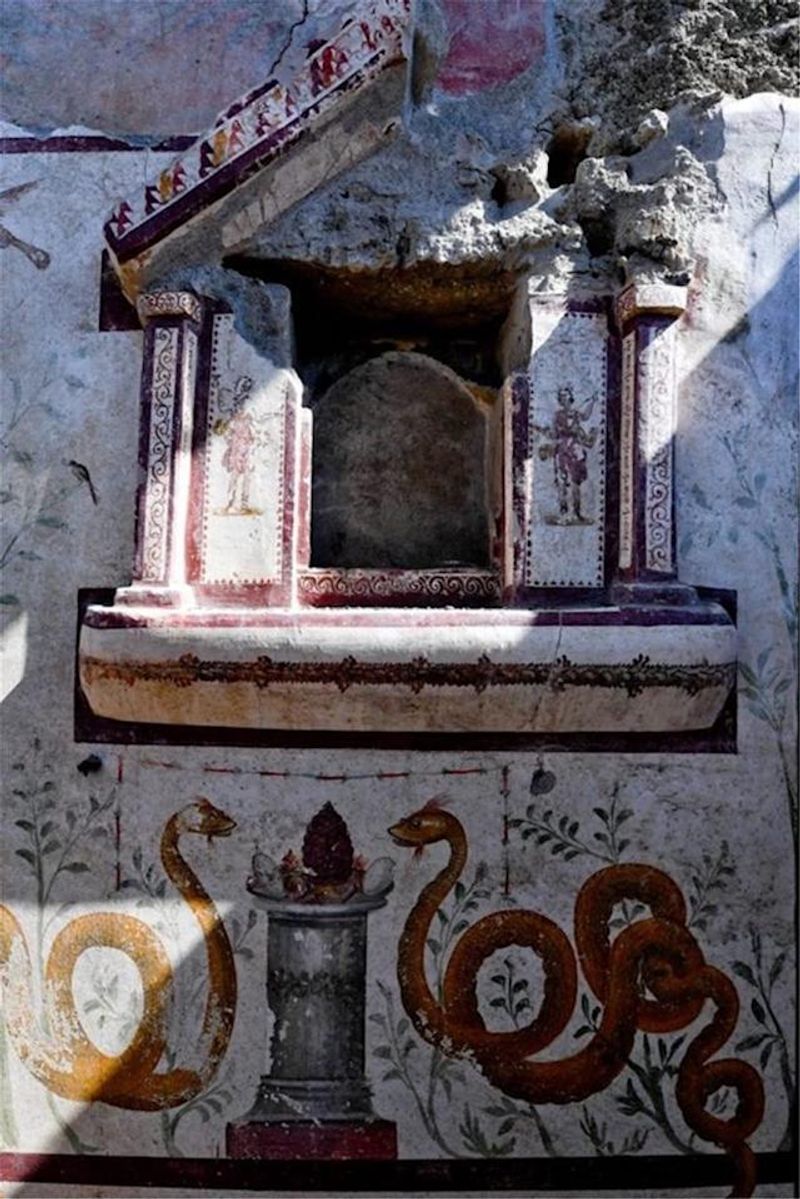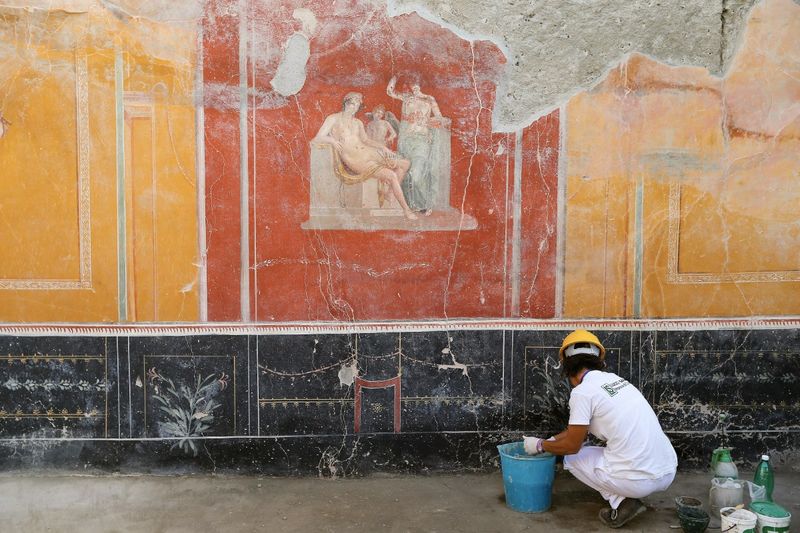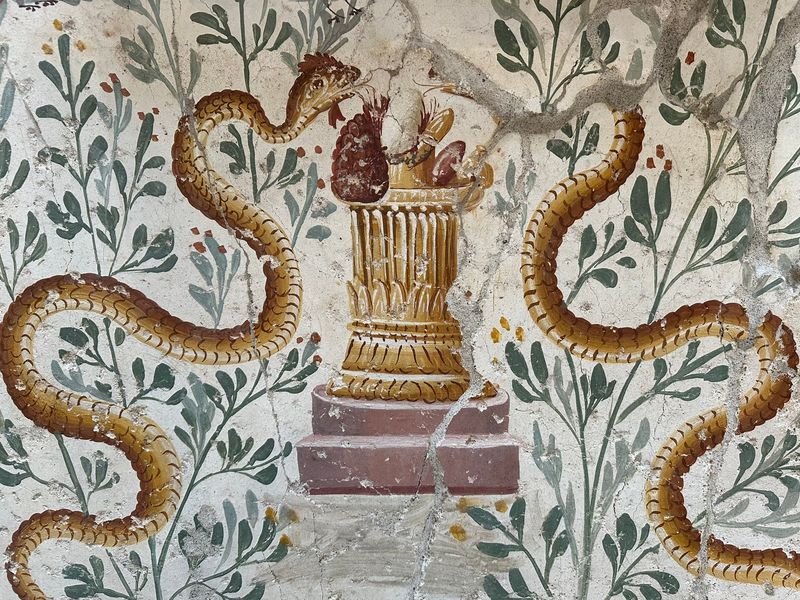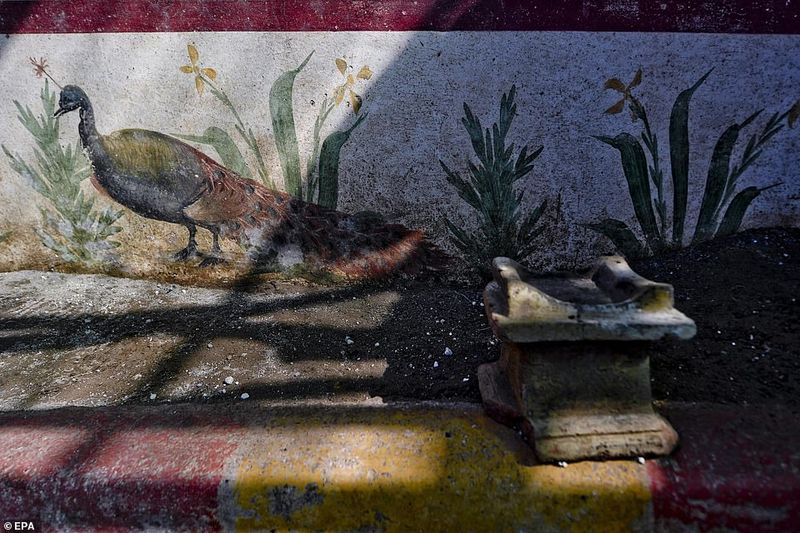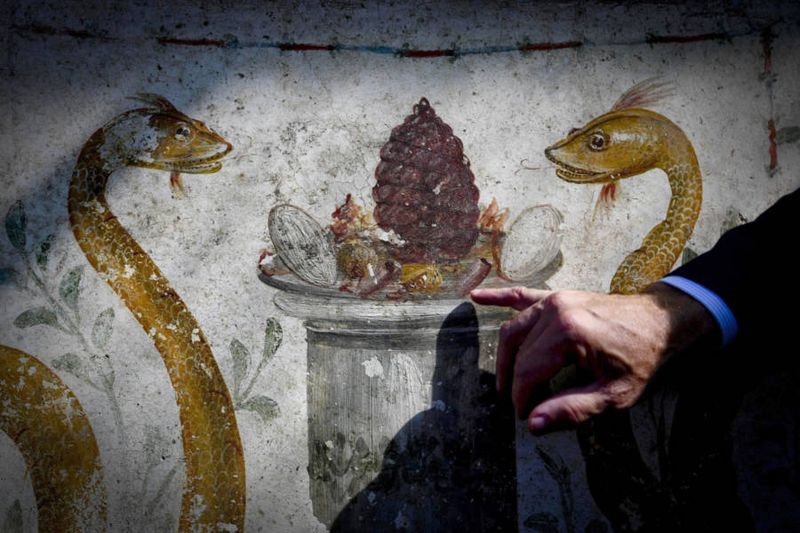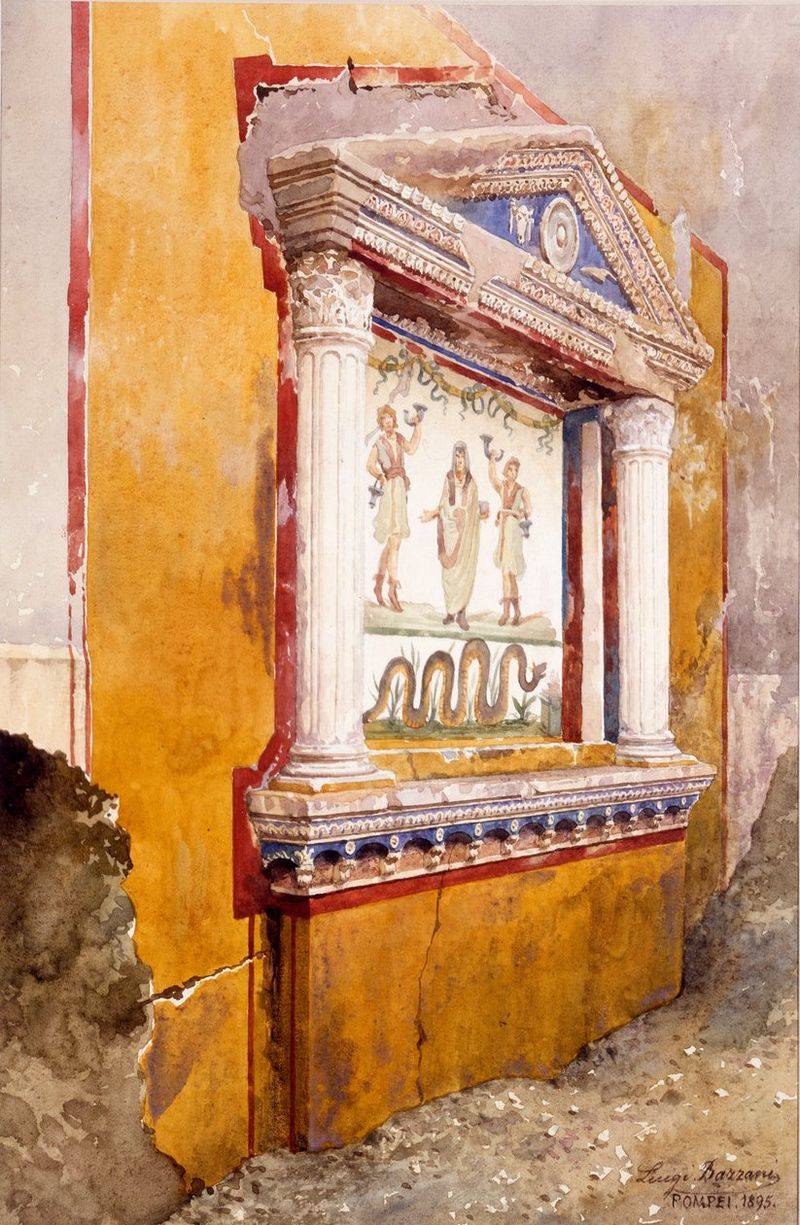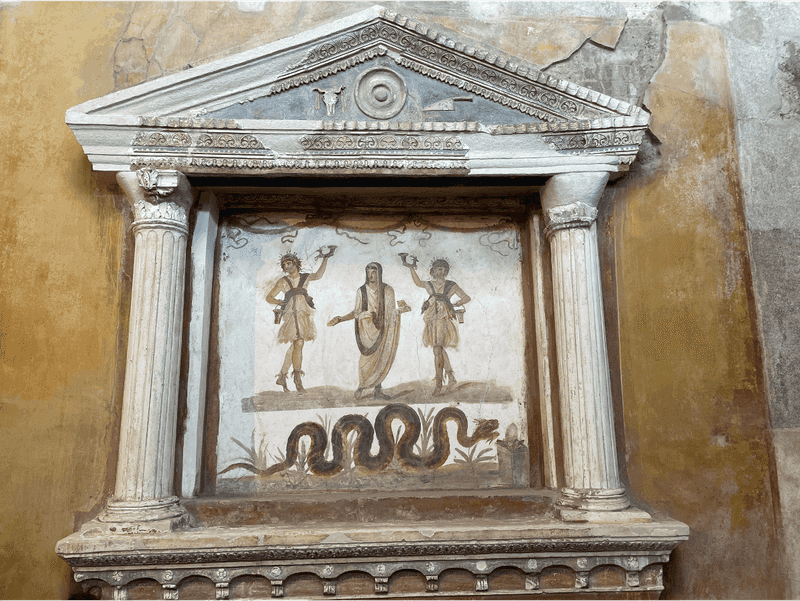When Mount Vesuvius erupted in 79 AD, it buried the Roman city of Pompeii under layers of ash and pumice. This catastrophic event ironically preserved countless treasures, including an extraordinary household shrine known as a lararium.
Recently uncovered by archaeologists, this remarkable shrine offers a rare glimpse into the private religious practices of ancient Romans, with its colorful murals and symbolic imagery still intact after nearly two millennia.
1. It Survived Because of the Vesuvius Eruption
The very disaster that claimed countless lives became this shrine’s unexpected savior. The thick blanket of volcanic ash that smothered Pompeii created a perfect time capsule, sealing away this precious religious site from oxygen, moisture, and the ravages of time.
While people fled in terror as Vesuvius roared to life, the mountain’s fury would ultimately protect this delicate artwork for future generations to discover. The intense heat actually helped preserve pigments in the murals, allowing modern eyes to see them almost exactly as ancient Romans once did.
2. The Murals Are Stunningly Vivid
Stepping into this ancient home’s sacred space feels like traveling back in time. The walls burst with colors that defy their age – rich reds, deep blues, and golden yellows that appear almost freshly painted rather than millennia old.
Artists who created these scenes used expensive pigments and meticulous techniques to honor their household gods. Each brushstroke reveals the skilled hand of craftsmen who understood both artistic principles and religious symbolism. Modern visitors often gasp when they first see these murals, shocked that something so ancient could retain such vibrant life and energy.
3. Twin Snakes Slither Through the Scene
Coiled and watchful, two serpents dominate the shrine’s main wall. These weren’t fearsome creatures to ancient Romans but beloved guardians of the household, believed to represent the genius loci – the protective spirit of the place.
Romans often left milk offerings for these snake spirits, believing they brought good fortune. The careful detail in these painted serpents – scales that seem to shimmer, alert eyes that follow viewers across the room – shows how important these protective symbols were to the family.
Snakes also connected to the underworld, forming a spiritual bridge between the living family and their ancestors.
4. A Proud Peacock Makes an Appearance
Fanning its magnificent tail across one wall stands a peacock, rendered with such skill that each eye in its plumage seems to watch over the household. This wasn’t just decorative – peacocks carried deep meaning in Roman religion.
Associated with the goddess Juno, wife of Jupiter and queen of the gods, the peacock symbolized immortality and royal protection. Romans believed peacocks’ flesh never decayed after death, making them perfect symbols of eternal life.
The family who commissioned this particular bird clearly sought Juno’s blessing, perhaps for a new marriage or to protect the women of the household.
5. Eggs Symbolize New Life
Nestled among the shrine’s imagery are several carefully painted eggs – simple objects carrying profound meaning. For Romans, eggs weren’t just breakfast; they represented the miracle of life emerging from seemingly lifeless shells.
Families prayed before these egg symbols when hoping for children or celebrating births. The particular arrangement of these eggs alongside other fertility symbols suggests this household may have been actively seeking to expand their family when Vesuvius erupted.
Archaeologists have found actual eggshells in offerings at similar shrines, showing how Romans literally brought these symbols into their religious practices.
6. It Was Found Inside a Private Home
Unlike grand temples where priests conducted formal ceremonies, this shrine occupied a humble nook in an ordinary family dwelling. Romans didn’t separate religious life from daily activities – their gods lived among them, requiring daily attention and offerings.
The location of this lararium near the kitchen suggests household members would pause during meal preparation to acknowledge their deities. Small oil lamps found nearby indicate evening rituals were common too.
What makes this discovery extraordinary is how it captures intimate religious moments – not the public spectacles we often associate with Roman worship, but the quiet, personal devotions that truly shaped Roman spiritual life.
7. It Deepens Our Understanding of Roman Faith
Before discoveries like this shrine, scholars primarily understood Roman religion through official texts and public monuments. This intimate glimpse into everyday spiritual life reveals how ordinary citizens practiced their faith away from temple priests and imperial ceremonies.
The carefully chosen symbols show a sophisticated blend of official religion and personal belief. Many items depicted relate directly to family concerns – fertility, protection, prosperity – rather than abstract theological concepts.
Most fascinating is how this shrine challenges our modern separation of sacred and secular. For this Roman family, religious practice wasn’t a Sunday activity but woven seamlessly into daily life, with household gods as familiar as family members.
